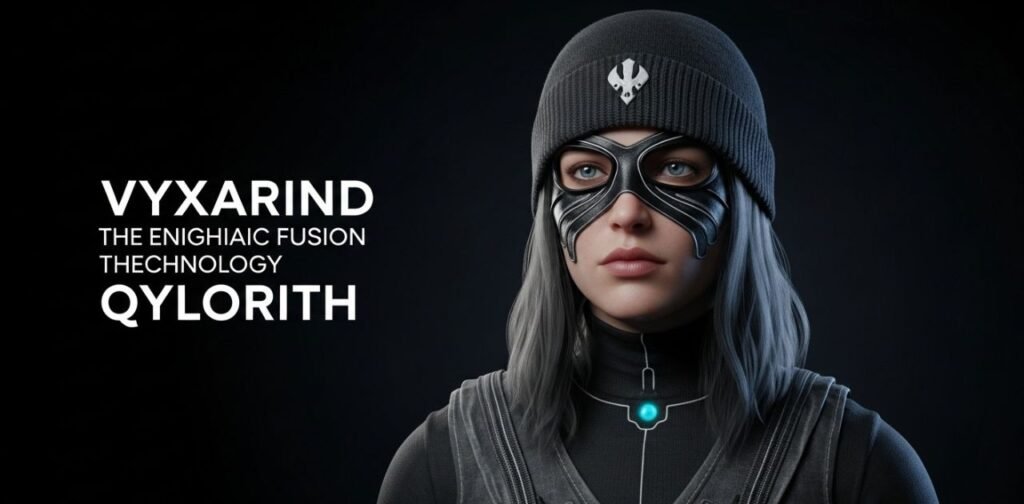Introduction
In the ever-evolving world of innovation, some terms arrive like whispers from the future — mysterious, layered, and powerful. Vyxarind Qylorith is one such phrase. It is not just a name but a concept that evokes images of advanced intelligence, adaptive systems, and mystical transformation. While traditional technology is grounded in logic and measurable outputs, Vyxarind Qylorith suggests something deeper: an interface where machines and humans meet, not only through data but through resonance, intuition, and evolution.
This enigmatic idea has sparked curiosity because it sits at the intersection of science and imagination. It speaks of quantum-like intelligence, systems that adapt and learn like organisms, and an almost spiritual connection between humans and their tools. Whether seen as a futuristic innovation, a mythic metaphor, or a guiding philosophy for future design, Vyxarind Qylorith challenges us to rethink what technology can mean.
The following sections will explore its possible interpretations, symbolic dimensions, potential applications, and ethical challenges. Together, these elements paint a picture of why Vyxarind Qylorith is more than just a concept — it is a vision of how tomorrow’s intelligence might unfold.
The Dual Essence of Vyxarind Qylorith
At its heart, Vyxarind Qylorith can be imagined as a dual system — two halves that create a complete whole.
- Vyxarind represents the core intelligence. It is like the invisible brain or engine, processing signals, managing energy, and sustaining the structure. Its essence lies in stability, depth, and unseen power.
- Qylorith symbolizes the adaptive interface. It is the skin, the surface, the sensory field that interacts with users and environments. It is responsive, changeable, and fluid — always shifting to align with context.
Together, these halves form a model of symbiosis. The inner core ensures resilience and logic, while the outer shell provides adaptability and connection. This dual essence makes Vyxarind Qylorith a metaphor for future systems that combine raw intelligence with human-centric design.
The symbolism here is profound. It suggests a balance between the hidden and the revealed, the logical and the intuitive, the mechanical and the emotional. In an age where technology often feels cold and detached, Vyxarind Qylorith hints at a warmer, more resonant possibility: machines that not only compute but also attune.
This duality also reflects human nature itself. Just as people have inner worlds of thought and outer worlds of expression, so too would this system hold both unseen intelligence and visible interaction. In this way, Vyxarind Qylorith mirrors the very beings it is designed to serve.
Potential Applications and Practical Imagination
Though abstract, the concept of Vyxarind Qylorith lends itself to a variety of imagined applications across fields. By viewing it as both engine and interface, we can speculate how it might transform industries and daily life.
1. Human-Machine Symbiosis
Future systems could leverage Vyxarind Qylorith to create truly adaptive interfaces that respond not just to commands, but to moods, emotions, and intentions. Imagine devices that sense your stress levels and adjust environments accordingly — a living extension of your needs.
2. Neural Interfaces
The dual structure of Vyxarind and Qylorith could be applied in brain-computer communication. Vyxarind as the stable core processes high-dimensional signals, while Qylorith translates them into human-friendly interactions. This might support medical breakthroughs, prosthetics, or cognitive enhancements.
3. Smart Environments
Homes and cities could become sentient spaces. Lights, sound, and energy systems might shift seamlessly to human rhythms, guided by adaptive Qylorith layers while powered by the steady Vyxarind core. The result: environments that feel alive.
4. Creative Industries
In art and design, Vyxarind Qylorith could be expressed as generative installations that react to audience presence, shifting form and tone dynamically. Here, technology becomes art — a dialogue rather than a display.
5. Advanced Infrastructure
On larger scales, the concept could inspire self-regulating grids, transport networks, or planetary monitoring systems. Vyxarind would manage stability and data coherence, while Qylorith adapts to changing demands in real time.
These examples, while speculative, show the expansive potential of merging intelligence with adaptivity. If realized, Vyxarind Qylorith could reshape how humans live, work, and imagine the future.
Ethical and Philosophical Considerations
With every powerful idea comes responsibility. If a system like Vyxarind Qylorith ever became reality, it would raise pressing ethical and philosophical questions.
Privacy and Emotional Data
An adaptive interface capable of sensing mood and biometrics would inevitably gather intimate data. How should ownership, consent, and protection of that data be handled? Without safeguards, such power could be misused for surveillance or manipulation.
Autonomy and Oversight
If the system learns and evolves independently, who ensures it aligns with human values? The balance between autonomy and control must be carefully managed to avoid unintended outcomes.
Inequality and Access
As with any advanced technology, access would likely begin with a privileged few. This raises concerns about widening gaps between those who can benefit and those left behind.
Symbolism and Cultural Meaning
Because Vyxarind Qylorith also resonates as a mythic or symbolic construct, it must be treated with respect. Misuse or commercialization could dilute its depth, reducing it to a shallow brand rather than a transformative vision.
Ultimately, Vyxarind Qylorith challenges not only engineers but also philosophers, ethicists, and cultural thinkers. It is not merely a blueprint for machines — it is a mirror reflecting how humanity wishes to engage with its own creations.
FAQs About Vyxarind Qylorith
1. What is Vyxarind Qylorith?
It is a conceptual framework symbolizing a fusion of core intelligence (Vyxarind) and adaptive interface (Qylorith). It represents advanced, human-centric systems that balance logic with resonance.
2. Is Vyxarind Qylorith a real technology?
Not in physical form yet. It is primarily a speculative idea, but elements of it overlap with real research in AI, quantum systems, and adaptive design.
3. Why is it described as mystical?
Because it merges logic with intuition, science with symbolism. This blend gives it a mythic quality, as though technology itself becomes a form of modern mysticism.
4. How could it impact daily life?
If realized, it could create environments and devices that sense and adapt to human needs in real time — from health monitoring to personalized experiences.
5. What risks are associated with it?
The main risks include data privacy, misuse of emotional signals, and loss of human oversight if systems evolve without accountability.
6. Can Vyxarind Qylorith be used creatively?
Yes. Artists, writers, and designers could adopt it as a framework for interactive art, speculative fiction, or immersive experiences.
7. Is it purely futuristic?
Mostly, but its ideas echo current directions in neuroscience, adaptive AI, and emotional computing. It is futuristic yet rooted in real trends.
Conclusion: The Future of Vyxarind Qylorith
Vyxarind Qylorith is not simply a term; it is a canvas for imagination. It embodies the dream of technologies that are not only intelligent but also adaptive, intuitive, and resonant with human life. Its duality — the unseen core and the responsive interface — symbolizes a future where logic and feeling converge.
The path ahead is both exciting and cautionary. While fragments of this vision are already emerging in AI, smart environments, and neural research, the full picture remains a horizon to strive toward. With careful thought, ethical frameworks, and creative exploration, Vyxarind Qylorith could become more than an idea: it could guide how humans shape the next generation of machines.
In the end, its true value lies in the way it inspires us to question, design, and dream. It asks us: What kind of intelligence do we wish to create — one that merely processes, or one that resonates with our humanity?
The answer to that question may define the future itself.



